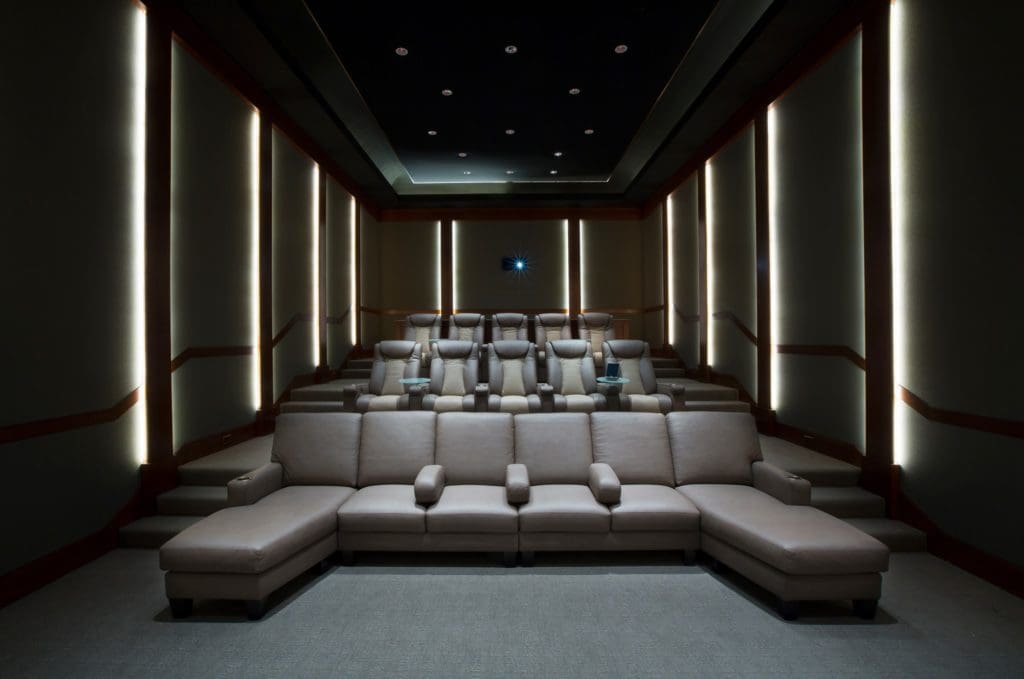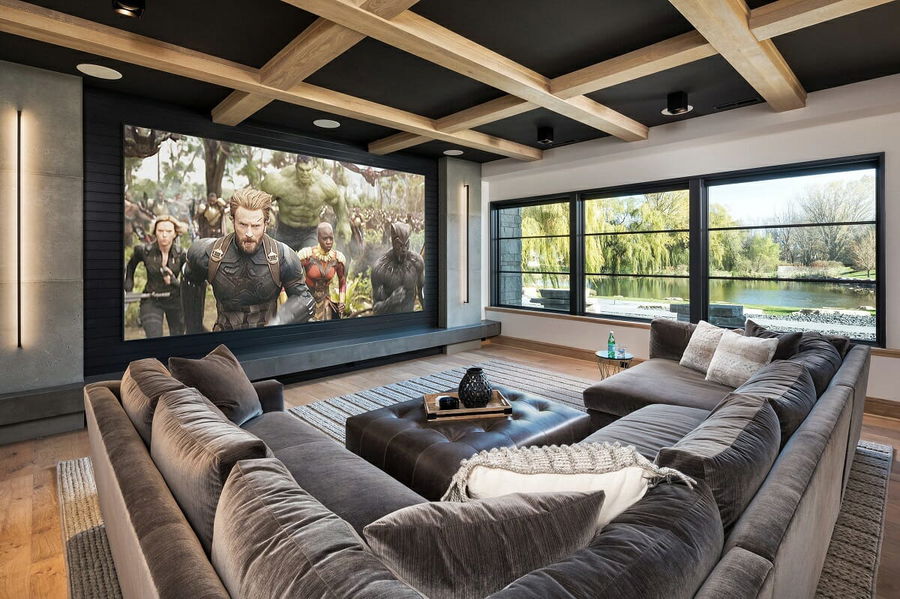Home Theater 101: Whatever You Need to Know for a Cinematic Experience at Home
Producing a home cinema that matches the motion picture experience of a business theater includes cautious factor to consider of several parts, including display choice, sound systems, and area design. Whether you are pondering the suitable display size or the details of border noise, understanding these principles is essential.
Picking the Right Screen
When setting up a home cinema, selecting the ideal screen can make or break the watching experience - home theater installation tampa. The display works as the focal point of your configuration, influencing picture quality, seeing angles, and total aesthetic. Secret factors to consider consist of screen resolution, type, and size
Initially, figure out the suitable display dimension based on your area measurements and seating range. Next off, pick between various display kinds, such as fixed-frame, mechanized, or retracting screens, each offering unique advantages.
Resolution is another essential variable. For a genuinely immersive experience, think about a display made for 4K or perhaps 8K web content, making sure sharpness and clarity. Additionally, take into consideration the display's gain, which impacts brightness and comparison; a higher gain can enhance illumination in well-lit areas, while a reduced gain might be preferable for darker settings.
Choosing Audio Equipment
Audio tools is an essential element of any home theater system, substantially improving the general viewing experience. The selection of audio equipment can determine the deepness, quality, and immersion of audio, important for developing a motion picture atmosphere.
When picking audio tools, consider a border stereo, which generally includes a receiver, numerous audio speakers, and a subwoofer. A 5.1 or 7.1 channel system is suggested, where the very first number represents the audio speakers and the 2nd the subwoofer, supplying an immersive soundscape. The receiver is the heart of the system, managing audio and video clip signals, and should support modern formats like Dolby Atmos for a boosted spatial experience.
Quality audio speakers are crucial; look for versions that offer a well balanced noise profile with good bass response. Floor-standing speakers can generate richer noise, while bookshelf options conserve area. Additionally, take into consideration cordless alternatives for ease of installment, although wired systems commonly provide exceptional performance.

Optimum Seating Plans
Developing a suitable home cinema experience hinges considerably on optimal seating arrangements. The setup of seats plays an important duty in both comfort and watching high quality, directly influencing the overall cinematic experience.
First, consider the display dimension and checking out distance. A typical guideline is to position seats at a distance approximately 1.5 to 2.5 times the diagonal dimension of the screen. This makes sure an immersive experience without stressing the eyes.
Following, altitude is essential. The back rows ought to be greater than the front to prevent obstructions if your seating is in a tiered format. For level seating, ensure that the front row is not as well near the screen, which every person has a clear view.
Furthermore, think about the arrangement in regards to social dynamics. Team seating can boost the common experience, while individual seats might be chosen for individual viewing.

Finally, focus on comfort with ergonomic seats that sustains extensive watching durations. Incorporating reclining chairs or cushioned seats can substantially boost the experience, making the home theater a preferred location for both entertainment and relaxation.
Lighting and Atmosphere
Reliable lights and atmosphere are crucial parts of a well-designed home movie theater, as they substantially influence the checking out experience. The right lighting can improve the cinematic feel, while poor options can interfere with it. For optimum outcomes, consider great site a split lights approach that includes ambient, task, and accent illumination.
Ambient lighting gives general lighting, guaranteeing that the room is not totally dark, which can stress the eyes. Dimmer switches are extremely advised, permitting for adjustments based on the material being checked out. Task lights, such as wall surface sconces or flooring lamps, offers practical lighting for activities like analysis or navigating the room without interrupting the general environment.
Accent lights can be utilized to highlight building attributes or produce focal points, adding depth and interest to the area. LED strip lights behind displays or along shelves can give a refined glow that improves the visual experience without overwhelming the visitor.

Wiring and Installation Tips
A tactical electrical wiring configuration is vital for attaining optimal performance in your house cinema system. Correct wiring not just makes certain high-quality audio and my site video clip signals however also enhances the overall visual of your area. Begin by drawing up your format, determining where each component will be put, including your display, speakers, and receiver.
When picking cords, focus on high-grade, suitably assessed electrical wiring to lower signal loss. HDMI wires must be made use of for video connections, while audio speaker cable need to match the specifications of your audio speakers and amplifier. Select in-wall ranked cable televisions to comply with safety and security criteria and maintain a clean appearance.

Conclusion
In summary, creating an extraordinary home cinema experience calls for cautious factor to consider of different aspects, consisting of screen selection, audio tools, seating arrangements, lighting, and wiring. Each element plays a vital duty in accomplishing optimum performance and setting, eventually improving the satisfaction of home enjoyment. By prioritizing these variables, a cinematic atmosphere can be successfully reproduced, permitting for immersive watching experiences that measure up to typical theater setups. Attention to detail in each location is crucial why not check here for total contentment.
Developing a home movie theater that matches the cinematic experience of a commercial theater involves mindful factor to consider of multiple elements, including screen selection, audio systems, and room layout.When setting up a home cinema, picking the best screen can make or break the seeing experience. Next, select between numerous screen types, such as fixed-frame, mechanized, or retracting displays, each offering unique advantages. For a really immersive experience, take into consideration a screen designed for 4K or also 8K web content, ensuring intensity and clarity.In summary, creating a phenomenal home cinema experience calls for careful factor to consider of various components, including display selection, audio equipment, seating arrangements, illumination, and electrical wiring.